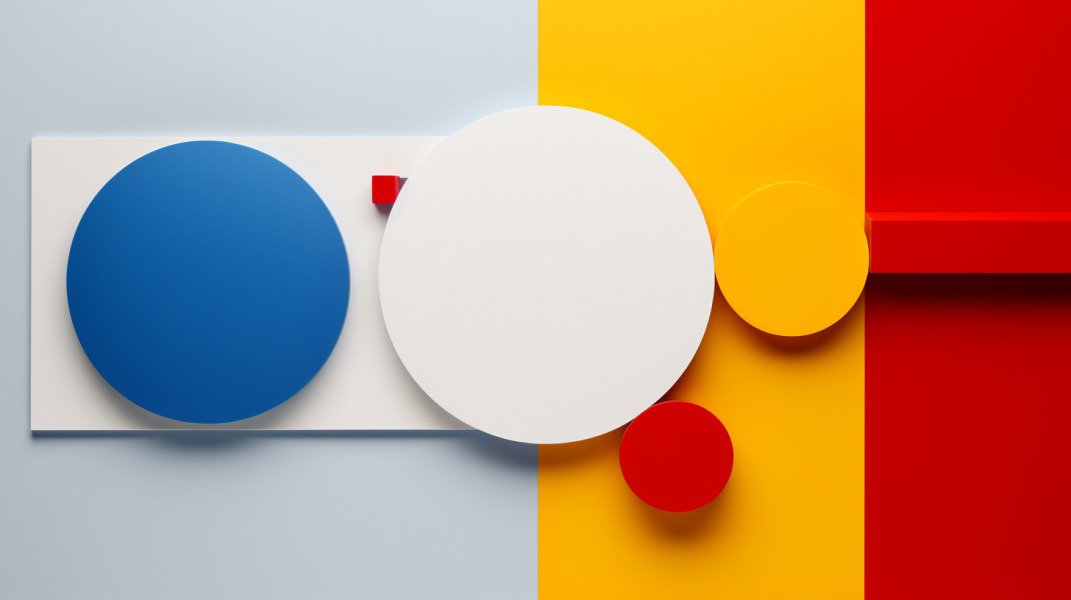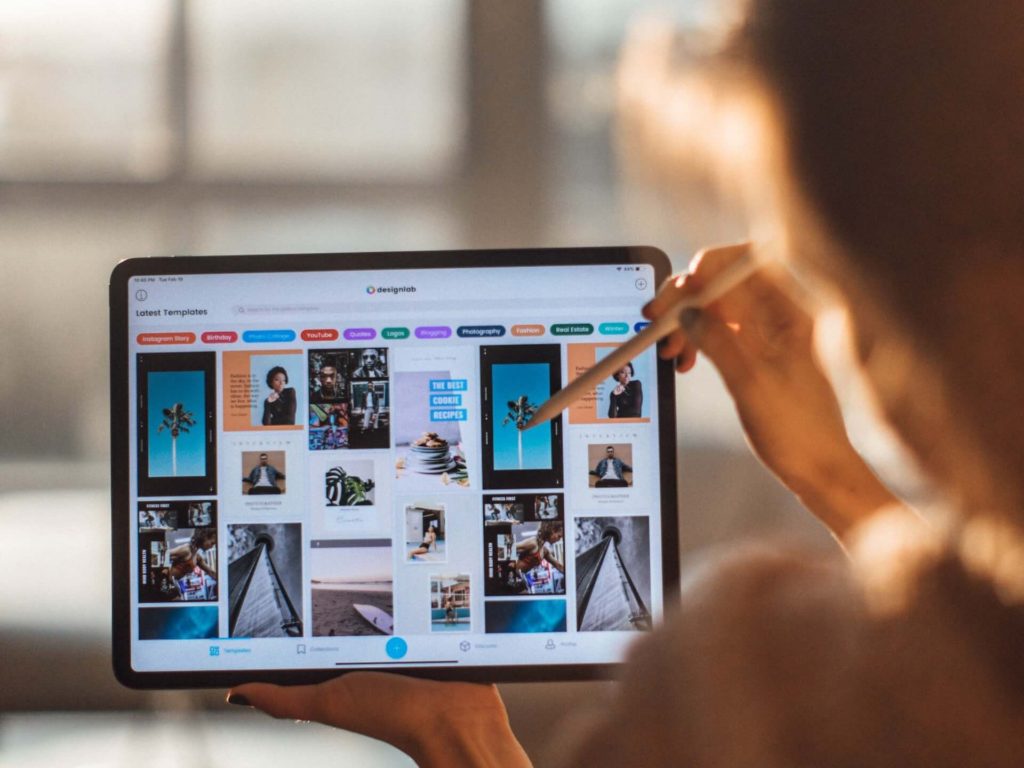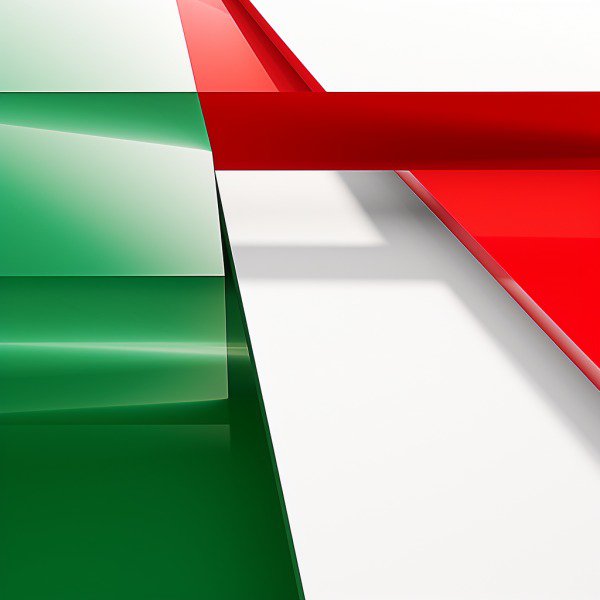Have you ever embarked on a design project, armed with just a sketchy idea and an enthusiasm that rivals a kid in a candy store? It’s thrilling, but it also feels like being lost at sea without any navigation tools. Enter the savior: A design brief example.
The process is akin to exploring an uncharted island. With no compass (the design brief), your excitement quickly morphs into anxiety as confusion sets in.
A well-crafted design brief can be your guiding star; shining light on what needs to be done, by whom, for who and when. From helping align expectations of clients and designers alike to avoiding endless email threads or unplanned Zoom calls – it’s more than just some fancy document.
Intrigued? Good! Buckle up because we’re about to embark on this exciting journey together!
Table of Contents:
- Understanding the Importance of a Design Brief
- Essential Elements of a Design Brief
- The Role of Research in Crafting a Design Brief
- Design Brief as a Roadmap
- The Chaos of Running Projects without Design Briefs
- Examples of Well-Written Design Briefs
- Importance of Approval in the Design Brief Process
- Incorporating Existing Assets into Your Design Brief
- The Role of Budget and Timeline in a Design Brief
- FAQs in Relation to Design Brief Example
- Conclusion
Understanding the Importance of a Design Brief
Crafting a well-defined design brief is essential when you’re planning your next design project; it’s like constructing the blueprints of an architect or plotting out the course for explorers, allowing you to avoid impromptu Zoom calls and long email threads.
It’s not just paperwork—it’s like building blueprints for an architect or roadmaps for explorers. They save time on impromptu Zoom calls and cut down those endless email threads that tend to spin out of control.
The value is clear: according to research, using well-put-together briefs can make projects up to 30% more efficient. This tool helps align everyone involved with what’s expected from them and how they should contribute towards achieving the main objective. That alignment reduces confusion and sets up your team for success.

A Common Language
A comprehensive design brief provides a common language for all stakeholders—the business owner, and designers work closely together understanding each other better than before, which ultimately leads to great work.
In essence, it gives clarity about goals, and identifies potential pitfalls in advance so we can avoid roadblocks along our creative journey. Think of it as translating abstract concepts into concrete actions—a sort-of decoder ring that turns ideas into results.
Navigating Through Chaos
If we compare running a project without a design brief to sailing through stormy seas without any navigational tools—you might reach land eventually but at what cost? Time lost due to miscommunication? Resources wasted because no one was sure where they were going?
No thanks. We prefer smoother voyages—and creating detailed design briefs help ensure calmer waters ahead by offering structure amidst chaos. Learn more here.
Making Better Decisions
Beyond just setting direction and expectations, design briefs also serve as a reference point for making decisions throughout the project. Every time there’s a question about whether to take one direction or another, we can refer back to our handy dandy design brief and ask: “Does this align with what we agreed on?”
When you’re knee-deep in design work—whether it’s graphics, web or motion—it’s simple to lose track of your core objective. Think of the Design Brief as your guiding star.
Key Thought:
Don’t underestimate the power of a solid design brief. It’s your blueprint, roadmap, and translator for turning abstract ideas into concrete results. A well-crafted brief aligns all stakeholders, anticipates hurdles to sidestep roadblocks, and acts as your guiding star in decision-making. Using it can make projects up to 30% more efficient.
Essential Elements of a Design Brief
The anatomy of an effective design brief includes several crucial elements. Each one serves as the backbone for the project, helping to guide designers and clients towards successful completion.
Defining Goals & Objectives
A well-crafted design brief starts with defining clear goals and objectives. This is more than just stating what you want your final product to look like—it’s about outlining what you hope it will achieve.
Your goal might be rebranding for a fresher look or creating marketing materials that attract a new target audience. It could even involve developing business cards that leave a lasting impression on potential partners at networking events.
Whatever your objective, make sure it’s specific, measurable, achievable, relevant and time-bound (SMART). Clear goals give graphic designers something concrete to work toward while keeping everyone focused on achieving the same end result.
Identifying Target Audience
The next essential element in crafting your design brief involves identifying who exactly this project is for—your target audience. Are they big companies looking for professional design agency services? Or perhaps they’re startups needing help from UX designers?
An understanding of basic demographic information isn’t enough; dive deeper into customer persona details like motivations, pain points and preferences can offer valuable insights into how best approach design decisions.
User research techniques can be useful here.
You’ll also need:
- To include detailed company info such as brand identity or existing digital assets.
- A thorough rundown of the timeline and budget so there are no surprises later on.
- A list of specific deliverables, so the design team knows exactly what’s expected at each milestone.
Clear acceptance criteria and scope help align expectations between client and designer, according to industry experts. It can also save time spent on phone calls or email threads for clarification.
Scope & Deliverables
For a solid brief, it’s crucial to clearly outline the project scope and pinpoint specific deliverables.
Key Thought:
A top-notch design brief is the backbone of a successful project. It’s all about setting clear, SMART goals and knowing your target audience well—beyond basic demographics to their motivations and pain points. Don’t forget to include detailed company info, budget, timeline, specific deliverables, and clear acceptance criteria for smooth sailing.
The Role of Research in Crafting a Design Brief
Behind every successful design project, there’s a powerful research process. It feeds into the crafting of an effective design brief, acting as the foundation for informed decision-making and strategic direction.
User Research Importance
Attempting to ascertain users’ actions, requirements, and inspirations is the aim of user research. This insight plays a crucial role when defining your product’s main objective or service offering.
You see; it’s like detective work. You gather data from various sources – interviews with users (akin to interrogations), surveys (like hidden clues), or usability testing (much like crime scene investigations). This treasure trove of information helps you get under the skin of your target audience and aligns everyone involved on who they’re designing for.
User research, thus forms an essential part of creating a well-written design brief that caters effectively to its end-users. Remember Sherlock Holmes wouldn’t solve cases without thorough investigation.
Competitor Analysis Significance
Now let’s talk about competitor analysis. Think about it as spying on other businesses – but legal and ethical. Competitor analysis can offer valuable insights into industry standards and help us learn from others’ successes –and mistakes too.
This approach doesn’t mean we copy what big companies are doing. Rather than replicating their graphic designs or web designs verbatim- think Bond using his cunning mind rather than gadgets- we aim to gain inspiration examples while retaining our brand identity uniqueness.
Note:”Good artists borrow; great artists steal”– Steve Jobs wasn’t encouraging IP theft but emphasizing absorbing ideas around us into our unique perspective.
Competitor analysis helps in understanding the conventions followed by other players in your industry, their design direction and decisions. This research forms a crucial part of crafting an effective design brief as it provides valuable reference points for what works and what doesn’t within your specific market.

The Payoff: A Comprehensive Design Brief
All the hard work we put into understanding our users and checking out the competition isn’t for nothing. It all pays off when it helps us craft a detailed design brief that guides us.
Key Thought:
Research is the secret weapon behind a killer design brief. It’s all about playing detective to understand your users’ behaviors, needs, and motivations through interviews, surveys or usability testing. Add in some ethical ‘spying’ on competitors for inspiration without imitation. All this data then fuels an effective design brief that nails both user needs and market relevance.
Design Brief as a Roadmap
A well-crafted design brief isn’t just a list of goals and ideas, but it’s like your GPS for the entire journey of your project. Imagine setting off on an epic road trip without directions? Not only would you waste time wandering aimlessly, but you might even end up somewhere completely unexpected.
In the same way, working without a comprehensive design brief can lead to similar confusion and inefficiency in achieving business objectives. But when done right, a design brief acts as a roadmap, helping both designers and clients avoid potential roadblocks.
Navigating Design Decisions with Clarity
Your design brief helps make important decisions early on. This includes defining target audience preferences or specifying deliverables – think of these as key stops along your route. You wouldn’t set off across country without knowing where you’re stopping for gas or sleep – so why start designing before clearly outlining what needs to be achieved?
The best part about this roadmap is that it’s flexible; able to accommodate detours or changes in direction if needed during product development. It provides not just guidance but also serves as reassurance that everyone involved understands the final destination.
Dodging Project Traffic Jams
We’ve all been there – stuck in gridlock traffic because we didn’t check our map app for any hold-ups ahead. Similarly, starting work on projects without clear guidelines from an effective design brief could leave teams stranded mid-way due to unanticipated issues such as budget constraints or shifting timelines.
An efficient ‘roadmap’ ensures smoother travels by aligning expectations upfront about specific details like contingency cushion limits or person responsible roles which are crucial factors impacting project completion successfully.
Making Every Mile Count: A Good Idea Turned Great
Design briefs, like a roadmap, help make every mile count. They allow you to turn good ideas into great ones by providing the necessary clarity and direction needed for effective implementation.
A solid design brief isn’t just paperwork. It’s a chance to get everyone on the same page, sparking meaningful discussions and fueling teamwork that takes our creativity up a notch.
Key Thought:
Think of a well-crafted design brief as your project’s GPS, guiding you to your business objectives while avoiding roadblocks. It helps set clear expectations and define crucial details like target audience preferences or deliverables – making it an indispensable tool for successful product development.
Dodging project roadblocks is a big plus too: it’s all about getting everyone on the same page from the get-go.
The Chaos of Running Projects without Design Briefs
Imagine trying to navigate a bustling city with no map or GPS. Attempting to traverse a metropolis without directions could result in plenty of dead-ends and missteps. This is what running a project without a design brief can feel like: chaotic, frustrating, and inefficient.
Importance of design brief
A comprehensive design brief serves as the roadmap for your entire project – from defining objectives and target audience all the way through delivery. It provides crucial clarity for both clients and designers alike, making sure everyone’s on the same page about expectations.
When there’s no clear plan in place, miscommunication becomes common; endless email threads sprout up over minor details while major issues slip through unnoticed until it’s too late. The result? A final product that doesn’t align with initial visions or meet client needs – not exactly ideal when you’re trying to impress stakeholders.
Avoiding chaos
To avoid such mayhem on your next big assignment remember this golden rule: Always start with an exhaustive design brief. From setting precise goals to clearly outlining deliverables, having everything documented at one place saves time spent clarifying doubts later down the line.
- An accurately defined main objective lets each team member know their role in achieving said goal.
- Detailed information about targeted demographics helps designers craft more relevant solutions enhancing user experience (UX).
- Incorporating contingency cushions within timelines reduces pressure during unexpected delays keeping morale high amidst tight deadlines.
“Running a project without a design brief can lead to 35% increased ambiguity, 40% higher chances of missing deadlines and a whopping 60% spike in conflict among team members.”
These are no small numbers to scoff at. In fact, they make a compelling case for the importance of design briefs in maintaining order and fostering productivity.
Consequences of neglecting the design brief process
Missing this key step could spell trouble – not only messing up projects, but also souring client-designer relationships. After all, no one enjoys feeling
Key Thought:
Imagine diving into a project without a design brief, it’s like exploring an unknown city with no map – messy and inefficient. It can lead to mistakes and unwanted detours. Your design brief is your guide, setting clear goals from start to finish while warding off miscommunication and letdowns.
Kick things off with this blueprint every time for smoother sailing; it’ll help improve user experience, better handle surprises along the way, boost team spirit, and nurture
Examples of Well-Written Design Briefs
To truly understand the power of a design brief, let’s explore two real-life examples that show how clear direction can lead to stunning results. One focuses on graphic design and the other highlights web design.
Graphic Design Brief Example
A good example comes from an eco-conscious startup aiming for a new brand identity. The company had recently decided to overhaul its image in line with its environmental mission.
Their graphic design brief was thorough and focused on their main objective – communicating sustainability through every visual element. They provided inspiration examples from big companies doing great work in this field as references.
The designer took cues from these guidelines and worked closely with them, creating mood boards before they started working on specific deliverables like business cards or marketing materials. The end result? A successful product launch backed by consistent branding that echoed their green philosophy across all channels.
Web Design Brief Example
In contrast, consider an online education platform looking for a complete project revamp – website redesigning being the primary task at hand. Their web design brief was explicit about user experience (UX) requirements – it needed to be easy-to-navigate even for non-tech-savvy users who might not have used similar platforms before.
Main Focus Areas In Web Design Brief: User-Friendly Navigation Educational Feel & Look Simplistic Yet Professional Design Specific Deliverables: Landing Page Redesign User Dashboard Creation Tutorial Videos Section Implementation
The web designers used this information to build an intuitive and accessible site, adding valuable insights into the user journey. The platform now hosts hundreds of tutorial videos and serves thousands of users daily – a testament to its successful design.
In both these examples, the clients’ expectations were met because they took time crafting well-written design briefs that gave their respective teams clear direction. These instances show how your next creative project can benefit from following in their footsteps.
Key Thought:
Good design briefs pave the way for stunning results, as seen in an eco-conscious startup’s rebranding and a learning platform’s website revamp. Both cases highlight the importance of clear objectives – whether it’s promoting sustainability or enhancing user experience. These examples prove that with detailed direction, your creative project can achieve similar success.
Importance of Approval in the Design Brief Process
Let’s set a scene. You’ve spent hours pouring over your design brief, making sure it covers all the bases – project goals, target audience, timeline, budget. But wait. There’s one more step that often gets overlooked: approval.
The final sign-off on a design brief isn’t just about crossing t’s and dotting i’s. It is an essential milestone where both parties – clients and designers alike – agree on what they’re setting out to achieve.
The Green Light for Creativity
You wouldn’t start driving without knowing your destination, would you? The same principle applies here too. Approving the design brief gives designers the green light to get their creative juices flowing within agreed-upon boundaries.
This seal of approval from both sides aligns expectations with reality by ensuring everyone is reading from the same page (literally.). This way we can avoid miscommunications which might lead to time-consuming revisions later down the line.
Avoiding Mid-Project Curveballs
Moving goalposts mid-project is every designer’s nightmare – suddenly having to adapt or even restart because of changes that could have been flagged earlier wastes valuable time and resources. So getting agreement at set milestones helps keep curveballs at bay.
Here are some insights into how avoiding mid-project changes can make things smoother.
Saving Time for What Really Matters
Brief approvals help us save time otherwise spent untangling confusion via endless email threads or impromptu Zoom calls (I’m looking at you ‘quick’ 5-minute meetings that turn into hour-long brainstorming sessions…). With a signed-off brief, we can focus on what really matters – creating great work.
The time saved by having clear project directions means designers have more hours to invest in bringing your vision to life. They get the space they need to deliver their best and make you look good.

A Sense of Ownership
Having an approved design brief also gives everyone involved a sense of ownership over the project. This fosters collaboration as all stakeholders are invested in its success.
Key Thought:
Securing approval on your design brief is more than just a formality—it’s the go-ahead for creativity within agreed boundaries. This essential step aligns expectations, prevents mid-project changes, and saves time for what really matters—creating stellar work. Plus, it fosters collaboration by giving everyone a sense of ownership over the project.
Incorporating Existing Assets into Your Design Brief
Amidst the design process, it’s often effortless to miss what already exists. However, existing assets can be a goldmine of inspiration and valuable context for your designers.
The beauty of incorporating existing assets is that they help paint a clearer picture of your brand identity. This might include everything from logos and marketing materials to product images or even previous web designs. It gives your designer a sense of where you’ve been and more importantly, where you want to go.
Sharing thoughts on these assets, too, can provide deeper insights than raw data alone could ever offer. It helps create an open dialogue between client and designer right from the start which aids in aligning expectations about the project’s direction.
Your Brand Identity: A Treasure Trove
Take time to review all elements associated with your brand before meeting with your design team or agency. Everything – yes everything – from business cards up through those long-forgotten email threads may hold clues as part of this treasure hunt.
A well-articulated mood board based on current branding provides not just color palettes but also communicates styles, themes or emotions tied closely with how customers perceive the brand.
Making Use Of Old And New In Harmony
Digital transformation doesn’t mean scrapping old ideas altogether. Sometimes reworking them within new frameworks results in surprising outcomes – innovative yet familiar at once.
Here’s some insight on blending tradition with innovation while keeping true to one’s roots.
Talk About The Good (And Bad)
While discussing existing assets, be frank about what worked and what didn’t. This feedback will guide your designers towards creating solutions that are better tailored to meet the needs of your target audience.
Consider sharing thoughts on failed product launches or designs too – they can serve as invaluable lessons for avoiding similar pitfalls in future projects.
Making It All Accessible
We’ve chatted a lot about using vintage gems, which is great. But where should these items hang out? A well-ordered Google Docs folder that the design team can access might be just the ticket.
Key Thought:
Remember to use your existing assets as a valuable resource when crafting your design brief. They provide important context and inspiration, reflecting the evolution of your brand identity. Discuss both successes and failures openly with designers for better outcomes. Store all these resources in an easily accessible location like Google Docs.
The Role of Budget and Timeline in a Design Brief
One thing’s for sure: there’s no great work without a solid plan. And that’s where the project timeline and budget come into play in your design brief.
A Shared Understanding of Project Time
To start, let’s consider the importance of time. Imagine you’re going on an epic road trip—you wouldn’t just jump in the car with no idea how long it’ll take to get there, right? It’s essential to know when your work starts, what milestones need hitting along the way, and when you expect to complete your project.
This timeline isn’t just a good idea—it’s critical. A well-defined schedule helps designers focus their efforts efficiently while also allowing clients to align expectations regarding delivery dates. Plus, it ensures everyone involved can effectively manage their resources throughout each phase.
Navigating through Budget Constraints
Now onto budget—a subject often as enjoyable as doing jumping jacks during phone calls. However unappealing though it may be at times; understanding its role is key for any successful design brief.
Your budget doesn’t only cover designer fees but should include contingency cushion too because life happens—just like spilled coffee on newly bought business cards.
In addition, by clearly outlining cost allocations for specific deliverables such as graphic designs or marketing materials—the designers are able understand exactly what they have at disposal creatively speaking from beginning till end which lets them better serve client needs whilst maintaining financial boundaries intact.
Balancing Quality Work within Defined Boundaries
The relationship between quality and constraints is similar to cooking gourmet meal with limited ingredients – not easy task indeed. But great chefs make do with whatever they’ve got—and so do talented designers. So even if your brand’s identity is as complex as a spicy curry, rest assured that your design team will deliver valuable insights and solutions within the budget and timeline.
The beauty of clearly defining project time and budget lies in its simplicity. It cuts through unnecessary email threads or endless phone calls while keeping everyone on track. As we all know, miscommunication can be quite costly—both in terms of money and time.
Key Thought:
Think of your project’s timeline and budget in a design brief as planning an awesome road trip. You gotta know when to hit the road, the cool spots you’ll pass by, and when you’re gonna roll into town. This roadmap gives designers a clear path to follow and lets clients get their hopes up at just the right time. And remember, budgeting isn’t only about paying for designer work – it’s also got room for those unexpected hiccups life throws our way.
FAQs in Relation to Design Brief Example
What is a design brief example?
A design brief example is a comprehensive document outlining the goals, target audience, timeline, and budget for a specific design project.
What should a design brief include?
A solid design brief should detail your company’s information, project objectives, target market insights. It must also mention timelines and budgets.
How long should a design brief be?
The length of the brief hinges on project complexity. Yet it’s key to keep things clear and concise to avoid confusion.
What is a UX Design Brief?
A UX Design Brief maps out user experience goals for digital projects like websites or apps. User research informs this guide heavily.
Conclusion
Charting the course of a design project isn’t always easy. But, with an effective design brief example, you’re off to a great start.
Your newfound knowledge can help set clear expectations and align everyone involved in your creative endeavor. It’s not only about creating attractive visuals; it is also essential to grasp your target market and determine practical timelines and financial resources.
Remember that research plays a critical role too! From user insights to competitor analysis, these nuggets of information can inform decisions throughout the design process.
No more running around like headless chickens on projects. No more chaotic email threads or unexpected Zoom calls. You now have what it takes to create well-crafted design briefs – your roadmap for successful designs!




